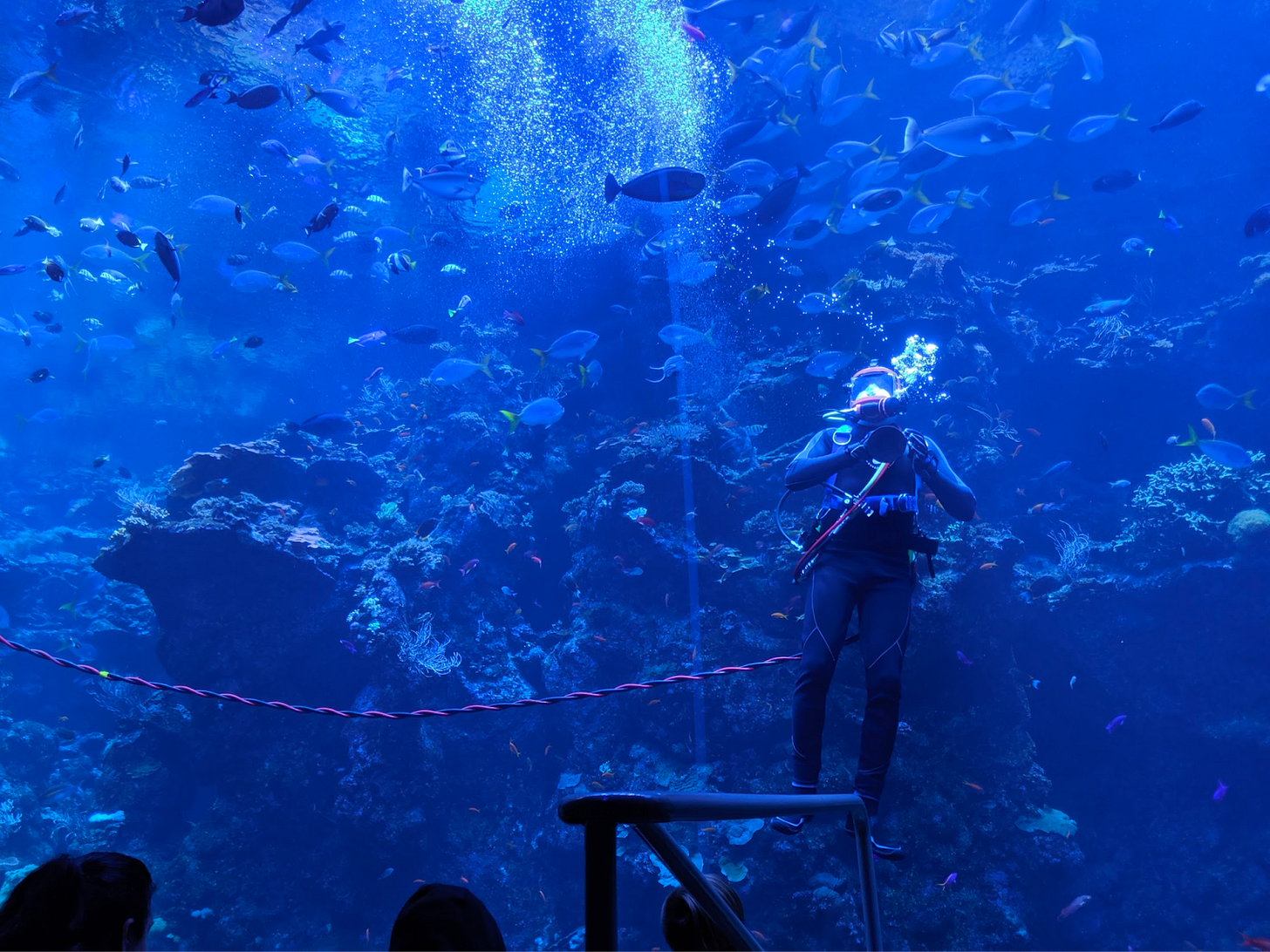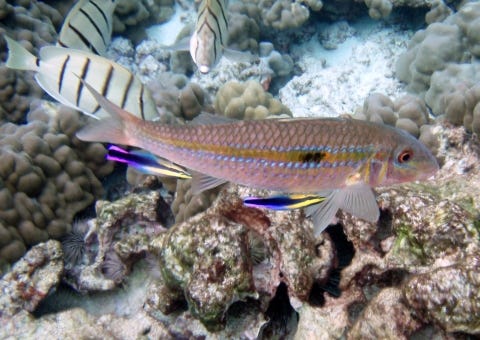“Did you know that coral reefs occupy less than 0.1% of the world's ocean area and provide a home for at least 25% of all marine species?” This sentence used to open my son’s favorite moment of the week. Of all the wonderful exhibits at the San Francisco Academy of Science, he was mostly excited about the daily “reef talk”. That’s when a staff member scuba dives into the coral reef (they have a real one in a giant aquarium!) to clean the glass and talk to the audience via a microphone.
I was so inspired back then that I named a new company after the coral reef, but that is a story for a different post.
Both that company as well as the Academy of Science shut down when the pandemic hit, and after an 18 months hiatus - I took my son to the academy as soon as they reopened. Some things were different. We had to book our visit in advance, we wore masks, and oh yes - they were not doing the coral reef talks anymore. I suppose they didn’t want too many people crowded in a small space. So visitors are no longer hearing that coral reefs cover less than 0.1% of the oceans yet provide home for more than 25% of marine species. But I know it, and it’s kept under the “wonderful pre-Covid memories” section of my brain.
This is somewhat similar to how large cities cover a tiny fraction of the Earth’s land, yet provide a home for a large portion of the human population. What’s more extreme is that only a small portion of the world’s wonderful cities are home to innovation hubs. While somewhat more distributed post-Covid, even in the last year more venture capital investments were made in SF Bay Area companies than in the next five regions combined.
My wife and I were on a trip to Australia just before we became parents and visited the Great Barrier Reef, which is incredibly beautiful and also the largest coral reef on earth - so large that it can be seen from outer space. It is about three times larger than the second largest - the Belize Barrier Reef (which I also hope to visit one day). Charles Darwin pointed out that coral reefs were found in some tropical areas but not others, and I sometimes wonder why significant technology and innovation hubs develop in some wonderful cities but not in others.
Not as large and impressive as the “reef” of the SF Bay Area, Tel Aviv also stands out as a technological innovation hub. Some track the origins of the Israeli startup scene to the Yozma program of the 1990’s, where the Israeli government invested $100M in ten local VC funds. Government officials convinced a group of former Israelis to return from the US and start local VC funds. They were implementing what they had learned in places like Silicon Valley, New York and Boston, and leveraging their networks to support Israeli founders.
I started my career as a software engineer in the Tel Aviv reef, before moving to the great reef of Silicon Valley.
According to Wikipedia, coral reefs form some of the world's most productive ecosystems, forming a complex and interconnected food chain. There are many symbiotic relationships within the ecosystem, such as the cleaning fish that eats the parasites off of a larger fish.
The clownfish finds protection from predators within the poisonous tentacles of the sea anemone. The clownfish is immune thanks to its mucus coating layer, and helps feed the anemone by letting them eat their leftovers or by also luring fish over. Researchers have found a direct correlation between the number of clownfish and number of anemones in a reef.
This is how ecosystems work. Just like founders, product builders, salespeople and investors all depend on each other in order to succeed. Some are able to be successful from a remote location, but the majority tend to concentrate in the largest “tech reefs”. Just like you can see on HBO’s “Silicon Valley”, different “species” (data scientists, pre-sale engineers, B2B early stage investors to name a few) form different types of relationships in order to prosper on the reef.
I find coral reefs admirable, but I would totally watch an HBO show that is making fun of the intricacies between clownfish, anemones and other species in The Great Barrier Reef.
Coral reefs are extremely diverse - thousands of different species can be found in them, and different species thrive in different reefs. According to Wikipedia, often “a first (lucky winner) recruit to a territory is typically able to defend it against latecomers”, and in some other cases there is a fierce competition that forces less-competitive species to survive in poorer habitat. I am curious if those incumbent species who dominate certain reefs sometimes face Clay Christensen’s “Innovator’s Dilemma”, by being too slow to adjust to disruptive changes in the reef ecosystem.
I have recently moved back to Tel Aviv with my family, to be closer to our extended families in Israel. The Israeli tech ecosystem was originally kickstarted by putting together corals and species from a mixture of other US “reefs”, similar to how the coral reef at the SF Academy of Science was extracted from a larger reef in the Philippines. Having lived in Silicon Valley for almost a decade, I am fascinated by the similarities but more so by the differences between these ecosystems. I feel like a researcher observing the different species and learning about their relationships.
My children and I have amazing memories from the Academy of Science, and now we are slowly discovering the interesting things that Tel Aviv has to offer. And I am working on finding the right place for me in this reef’s ecosystem.







